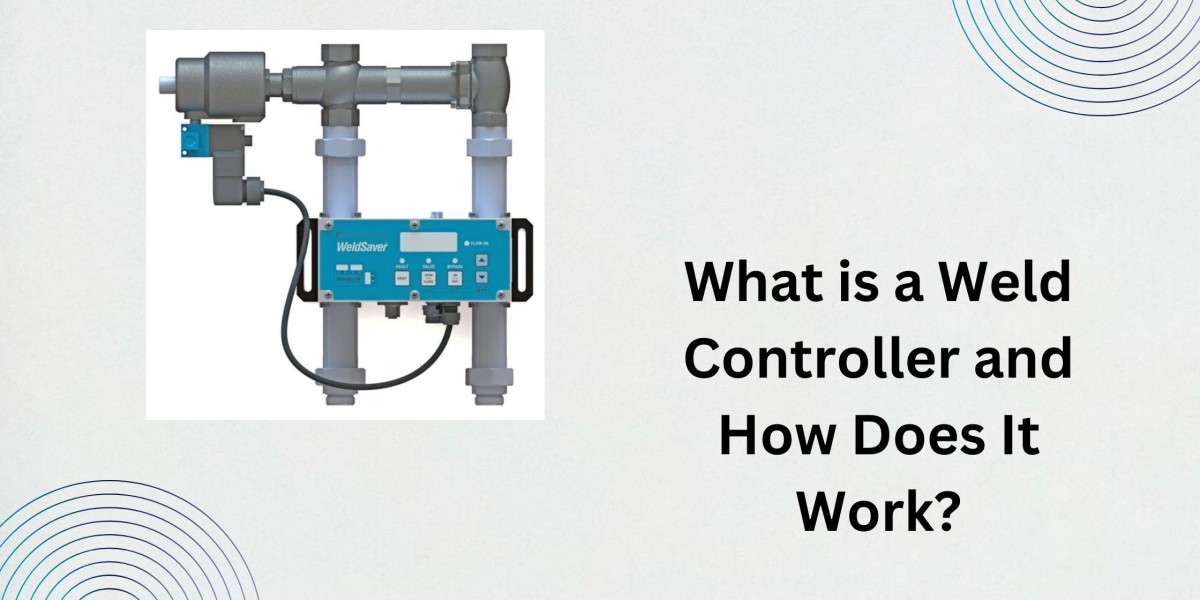Welding is a vital manufacturing process that joins materials, particularly metals, through heat application. Over time, welding techniques have advanced to include methods such as MIG, TIG, and stick welding. Precision in welding is crucial, as the weld's quality directly impacts the final product's strength, durability, and safety. Technological advances, like the use of weld controller, help improve the consistency and efficiency of the process. This introduction will explore the role of weld controllers in modern welding operations.
What is a Weld Controller?
A weld controller is an electronic device that regulates and monitors various parameters during welding. It ensures that the welding parameters, such as voltage, current, and speed, remain consistent throughout the operation. The essential components of a weld controller include the interface for settings adjustment, sensors for real-time monitoring, and feedback systems to make real-time adjustments. In welding systems, it integrates with welding machines or robotic arms to provide seamless operation and precise weld control, offering a reliable solution for maintaining consistent weld quality.
How Does a Weld Controller Work?
Weld controllers regulate welding parameters like voltage, current, and speed. Adjusting these parameters in real-time ensures a consistent quality weld. These controllers work closely with welding machines and robotic systems to maintain stability. The feedback loop constantly monitors the welding process, making real-time adjustments to compensate for any changes in conditions, ensuring that each weld meets the desired standards.
Key Features of Weld Controllers
Weld controllers ensure precise and efficient welding operations by monitoring and regulating various parameters. The WeldSaver™ 6 Legacy Series by Proteus Industries offers several key features to enhance welding performance, reliability, and safety.
Real-Time Flow Monitoring
One of the most critical features of the WeldSaver™ 6 is its ability to monitor the coolant flow rate in real-time continuously. This ensures that welding electrodes remain at optimal temperatures, preventing overheating and maintaining consistent weld quality. Any deviations in flow rate are immediately detected, allowing operators to address issues before they lead to costly downtime or equipment failure.
Leak Detection and Prevention
The WeldSaver™ 6 is equipped with advanced leak detection technology that promptly identifies even the most minor leaks in the cooling system. By detecting leaks early, the system prevents damage to welding components and reduces maintenance costs. Additionally, it can automatically shut off the coolant supply to minimize fluid loss and protect sensitive equipment from potential harm.
Customizable Alarm and Alert Settings
The WeldSaver™ 6 allows users to configure custom alarm thresholds for flow rate, pressure, and temperature to accommodate different welding applications. Audible and visual alerts notify operators when parameters exceed predefined limits, ensuring prompt corrective action. This feature helps prevent unexpected failures and improves operational efficiency.
High-Temperature and High-Pressure Compatibility
Designed for demanding welding environments, the WeldSaver™ 6 can operate effectively under high-temperature and high-pressure conditions. Its robust construction ensures durability, while its ability to maintain stable coolant flow under extreme conditions enhances overall system reliability.
Benefits of Using a Weld Controller
1. Improved Welding Precision
A weld controller regulates welding parameters such as current, voltage, and time to ensure consistent and accurate welds. Maintaining precise control over welding reduces defects such as porosity, spatter, and weak joints. This level of precision is crucial in industries where high-quality welds are essential, such as automotive, aerospace, and heavy machinery manufacturing.
2. Enhanced Efficiency and Productivity
A weld controller optimizes the welding cycle with automated monitoring and real-time adjustments, minimizing downtime and material waste. The ability to fine-tune settings according to specific welding requirements increases productivity, allowing manufacturers to complete more welds in less time without compromising quality. This leads to higher throughput and better resource utilization.
3. Consistent Weld Quality
One of the significant challenges in welding is maintaining uniform quality across multiple welds. A weld controller ensures repeatability by consistently applying the same parameters, eliminating variations caused by human error. This consistency is critical in large-scale production environments, where even minor inconsistencies can result in product failures or costly rework.
4. Cost Savings in the Long Run
A weld controller offers significant financial benefits by minimizing defects, reducing rework, improving efficiency, and lowering maintenance costs. Companies that invest in high-quality weld controllers experience lower production costs and higher profitability over time. Its long-term savings quickly offset the initial investment in a weld controller.
Applications of Weld Controllers
Weld controllers are used in various industries, including automotive and aerospace, where precision welding is essential. They ensure consistent results for high-volume production in robotic and automated welding systems. Weld controllers can also be customized for different materials and welding techniques, offering versatile solutions for industries requiring specific welding applications.
Future of Weld Controllers
Emerging technologies such as manufactured intelligence and the Internet of Things (IoT) are shaping the future of weld controllers. These advancements promise to enable predictive maintenance, where systems can identify issues before they occur. Innovative welding and automation also evolve, allowing greater efficiency and precision in welding operations. As welding continues to integrate with digital technologies, the role of weld controllers will become even more central in achieving high-quality, cost-effective manufacturing.
Conclusion
Weld controllers are integral to modern welding operations, enhancing precision, consistency, and efficiency. As welding techniques continue to evolve, the role of these controllers will expand with new technologies. They bring tangible benefits, including reduced defects, improved productivity, and cost savings. With applications spanning various industries and future innovations on the horizon, weld controllers will remain crucial in ensuring high-quality welding across the manufacturing sector.








